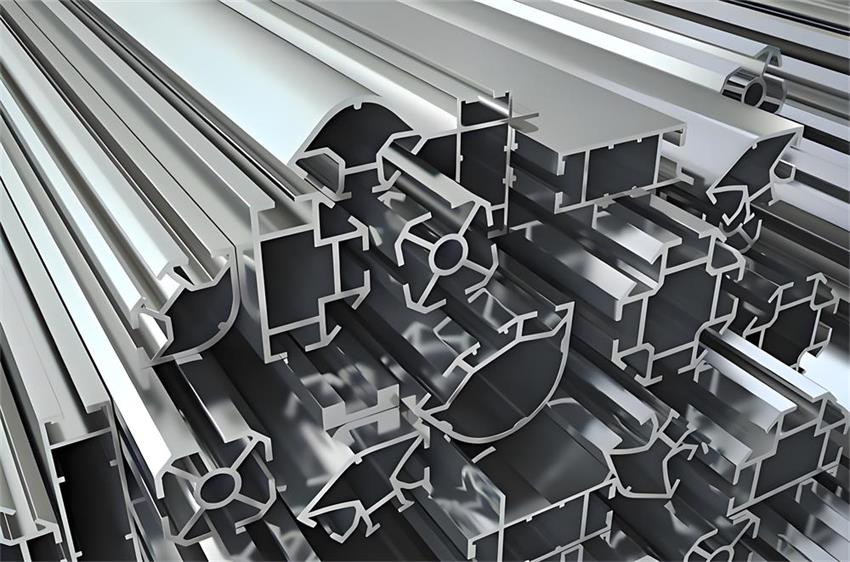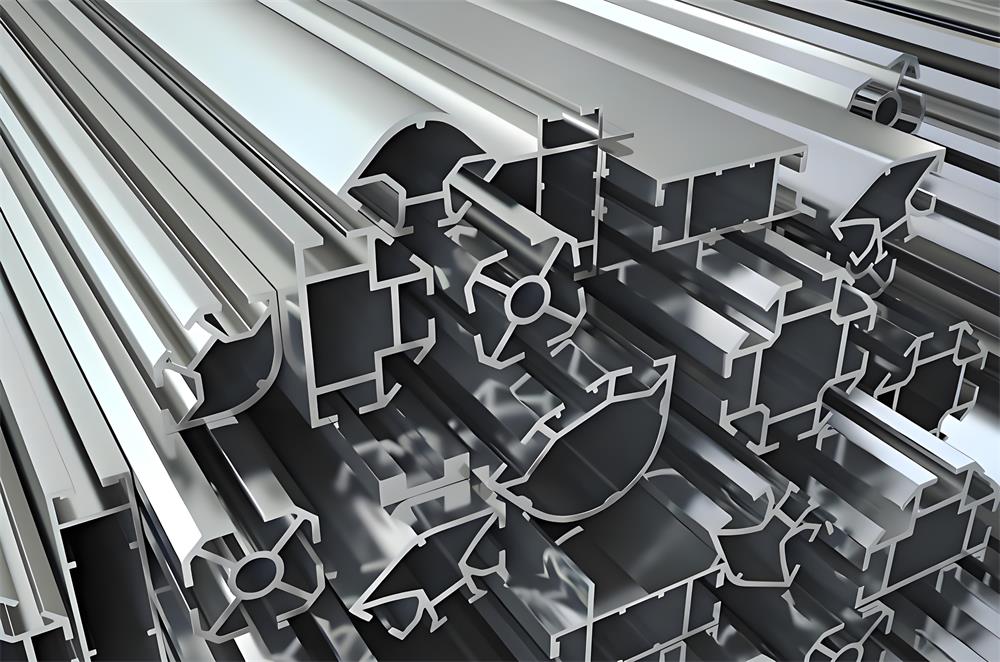How many types of aluminium profiles are there?

In the world of modern manufacturing and construction, aluminum profiles play a crucial role. Their versatility, durability, and relatively low weight make them a preferred choice across a wide range of industries. If you've ever wondered, "How many types of aluminum profiles are there?" you're about to embark on an in - depth exploration of this fascinating topic.

1. Architectural Aluminum Profiles
1.1 Window and Door Profiles
One of the most common applications of aluminum profiles in architecture is for windows and doors. Aluminium casement windows are a prime example. These profiles are designed with precision to ensure a perfect fit, excellent insulation, and long - term durability.
Aluminium casement windows are known for their sleek appearance. The aluminum frames can be customized in various colors and finishes, allowing for seamless integration with different architectural styles. For example, in modern minimalist buildings, a sleek, powder - coated white or black aluminum window frame can enhance the overall aesthetic appeal. In traditional or heritage - style buildings, a bronze - toned or wood - grain - finish aluminum frame can mimic the look of traditional materials while offering the benefits of aluminum, such as corrosion resistance.
In terms of functionality, these profiles are engineered to provide good thermal insulation. Many modern aluminum casement window profiles feature multi - chambered designs and thermal breaks. The thermal break, often made of a non - conductive material like polyamide, separates the inner and outer parts of the aluminum frame. This effectively reduces heat transfer, keeping the interior of the building cool in summer and warm in winter, and ultimately helping to lower energy consumption.
1.2 Curtain Wall Profiles
Curtain walls are an essential part of modern high - rise buildings. Aluminum profiles are the material of choice for constructing curtain walls due to their high strength - to - weight ratio. These profiles can be fabricated into complex shapes and sizes to meet the design requirements of different buildings.
Aluminum curtain wall profiles are designed to support the glass or other cladding materials while providing structural integrity. They are often extruded into unique cross - sectional shapes that can accommodate different glazing systems, such as point - supported glass, unitized curtain walls, or stick - built curtain walls. Point - supported glass curtain walls, for instance, use aluminum profiles with special fittings to hold the glass panels in place, creating a visually stunning and transparent facade.
The surface treatment of aluminum curtain wall profiles is also crucial. Anodizing is a popular treatment method that not only enhances the corrosion resistance of the aluminum but also gives it a beautiful, durable finish. Other surface treatments like powder coating can provide a wider range of color options, from bright and bold colors for modern and eye - catching buildings to more subdued and earth - toned colors for a more understated look.
1.3 Roofing and Facade Profiles
Aluminum profiles are also used extensively in roofing and facade systems. For roofing, aluminum profiles can be formed into various shapes, such as standing - seam roofing profiles. Standing - seam roofs are highly popular in commercial and industrial buildings as well as some high - end residential properties.
The standing - seam design of aluminum roofing profiles offers several advantages. Firstly, it provides excellent water - tightness. The raised seams between the panels prevent water penetration, even in heavy rain or snow conditions. Secondly, aluminum's light weight makes it easier to install on roofs, reducing the load on the building's structure. Additionally, aluminum roofing profiles can be coated with reflective finishes, which can help to reduce heat absorption and lower the building's cooling costs.
In facade systems, aluminum profiles can be used to create decorative elements, such as louvers or sunshades. These profiles can be adjusted to control the amount of sunlight entering the building, providing both aesthetic and functional benefits. For example, perforated aluminum facade profiles can be used to create a unique pattern of light and shadow on the building's exterior, adding an element of visual interest.
Chemical Element |
6063 Alloy Composition (%) |
6061 Alloy Composition (%) |
Aluminum (Al) |
97.5 - 98.8 |
95.8 - 98.0 |
Silicon (Si) |
0.2 - 0.6 |
0.4 - 0.8 |
Iron (Fe) |
≤0.35 |
≤0.7 |
Copper (Cu) |
≤0.10 |
0.15 - 0.40 |
Magnesium (Mg) |
0.45 - 0.9 |
0.8 - 1.2 |
Chromium (Cr) |
- |
0.04 - 0.35 |
Zinc (Zn) |
≤0.10 |
≤0.25 |
Manganese (Mn) |
≤0.10 |
≤0.15 |
2. Industrial Aluminum Profiles
2.1 Machine and Equipment Frames
Industrial profiles are widely used in the construction of machine and equipment frames. Aluminum's high strength - to - weight ratio makes it an ideal material for these applications. For example, in the automotive industry, aluminum profiles are used in the construction of production line equipment frames. These frames need to be strong enough to support heavy machinery and components but also lightweight to allow for easy installation and reconfiguration.
Aluminum profiles for machine and equipment frames can be customized with different slot and hole patterns. These features make it easy to attach various components, such as motors, sensors, and control panels, using bolts, nuts, or other fasteners. The flexibility of aluminum extrusion allows for the production of profiles with complex cross - sectional shapes that can meet the specific requirements of different machines and equipment.
2.2 Conveyor Systems
Conveyor systems are an integral part of many industries, including manufacturing, logistics, and warehousing. Industrial aluminum profiles are commonly used in the construction of conveyor frames. Aluminum conveyor profiles are lightweight, which reduces the energy required to move the conveyor belts. This is especially important in large - scale conveyor systems where energy efficiency is a key consideration.
The corrosion resistance of aluminum is also a significant advantage in conveyor systems. In environments where the conveyor may be exposed to moisture, chemicals, or other corrosive substances, aluminum profiles can maintain their structural integrity over time. Additionally, aluminum conveyor profiles can be easily assembled and disassembled, making maintenance and repair work more convenient.
2.3 Automation Equipment
In the era of industrial automation, industrial aluminum profiles play a vital role in the construction of automation equipment. Robotic arms, for example, often use aluminum profiles in their structural components. Aluminum's high strength and low weight allow robotic arms to move quickly and precisely while consuming less energy.
Aluminum profiles are also used in the construction of workstations and fixtures for automated production lines. These profiles can be customized to hold and position components accurately during the manufacturing process. The ability to quickly modify and reconfigure aluminum - based automation equipment makes it adaptable to changing production requirements, which is essential in today's fast - paced manufacturing environment.
3. Transportation - related Aluminum Profiles
3.1 Automotive Profiles
In the automotive industry, aluminum profiles are increasingly being used to reduce vehicle weight and improve fuel efficiency. Aluminum is used in the construction of vehicle frames, body panels, and interior components. For example, some high - end cars use aluminum profiles in their chassis construction. The use of aluminum profiles in the chassis can significantly reduce the vehicle's unsprung weight, which improves handling and ride quality.
Aluminum body panels, such as hoods, doors, and fenders, are also becoming more common. These panels are lighter than their steel counterparts, which helps to improve fuel efficiency and reduce emissions. Additionally, aluminum's corrosion resistance means that the body panels will maintain their appearance and integrity over a longer period.
3.2 Aerospace Profiles
The aerospace industry has long been a major user of aluminum and its alloys. Aluminum profiles are used in the construction of aircraft fuselages, wings, and other structural components. Aluminum's high strength - to - weight ratio is crucial in aerospace applications, as every kilogram of weight reduction can lead to significant fuel savings over the lifespan of an aircraft.
Aerospace - grade aluminum profiles are subject to strict quality control and manufacturing processes. They are often made from high - purity aluminum alloys with specific mechanical properties. These profiles need to be able to withstand extreme temperatures, high pressures, and vibrations during flight. Surface treatments such as anodizing and painting are also used to protect the aluminum profiles from corrosion and to enhance their aerodynamic performance.
3.3 Railway Profiles
In the railway industry, aluminum profiles are used in the construction of train carriages. Aluminum - bodied trains are lighter than those made of steel, which allows for higher speeds, better energy efficiency, and reduced wear and tear on the tracks. Aluminum profiles are used in the framework of the train carriages, as well as in the interior fittings such as luggage racks, seat frames, and partition walls.
The use of aluminum profiles in railway applications also offers advantages in terms of fire resistance and sound insulation. Special aluminum alloys can be developed to meet the strict fire - safety standards in the railway industry. Additionally, the design of aluminum profiles can be optimized to reduce noise transmission, providing a more comfortable environment for passengers.
4. Consumer - product - related Aluminum Profiles
4.1 Furniture Profiles
Aluminum profiles are widely used in modern furniture design. In outdoor furniture, such as patio chairs and tables, aluminum profiles are a popular choice due to their corrosion resistance and light weight. Aluminum patio furniture can withstand the elements, including rain, sun, and humidity, without rusting or deteriorating.
Indoor furniture also benefits from the use of aluminum profiles. For example, in modern office furniture, aluminum is often used in the frames of desks, chairs, and storage units. The sleek and modern look of aluminum profiles can enhance the aesthetic appeal of the office environment. Aluminum - framed furniture is also easy to clean and maintain, making it a practical choice for high - traffic areas.
4.2 Electronic Device Profiles
In the world of consumer electronics, aluminum profiles are used in the construction of device enclosures. Smartphones, laptops, and tablets often feature aluminum casings. Aluminum provides a combination of strength, durability, and a premium look and feel. The lightweight nature of aluminum also makes it suitable for portable electronic devices, reducing the overall weight of the device without sacrificing structural integrity.
Aluminum enclosures for electronic devices can also help with heat dissipation. Many electronic components generate heat during operation, and aluminum's good thermal conductivity allows for efficient heat transfer, which helps to keep the device cool and prevents overheating, ultimately improving the device's performance and lifespan.
4.3 Sporting Goods Profiles
Aluminum profiles are used in a variety of sporting goods. For example, in bicycles, aluminum is a popular material for the frame. Aluminum - framed bicycles are lighter than steel - framed ones, which makes them easier to pedal and more maneuverable. The high strength of aluminum also ensures that the frame can withstand the stresses and strains of cycling, whether it's on smooth roads or rough terrains.
In sports equipment such as tennis rackets, golf clubs, and baseball bats, aluminum profiles can be used in the construction of the handle or the frame. Aluminum's properties allow for the creation of lightweight yet powerful sports equipment, giving athletes an edge in performance.
In conclusion, the world of aluminum profiles is incredibly diverse, with applications spanning from architecture and industry to transportation and consumer products. Whether it's the energy - efficient aluminium casement windows in our homes, the sturdy industrial profiles in manufacturing plants, or the lightweight profiles in our cars and bicycles, aluminum profiles have become an indispensable part of our modern lives. If you're looking for high - quality aluminum profiles, look no further than aluinno. We are committed to providing top - notch aluminum profile products to meet your various needs.


 En
En



 Location:
Location:
















